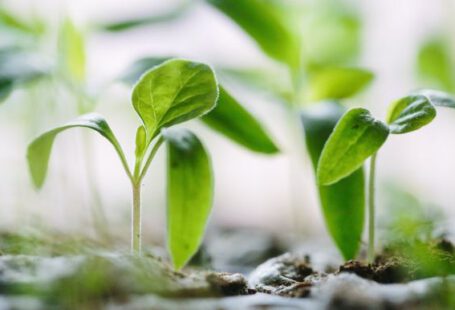Plants, like humans and animals, require a balanced diet to thrive and grow. While we often think of plants as being self-sufficient in their ability to produce their own food through photosynthesis, they still rely on essential nutrients from the soil to support their growth and development. Nutrient deficiencies in plants can have a significant impact on their health and productivity. In this article, we will explore the signs of nutrient deficiency in plants and how to address them.
Yellowing Leaves – A Sign of Nitrogen Deficiency
One of the most common signs of nutrient deficiency in plants is the yellowing of leaves. When a plant lacks nitrogen, its leaves will turn pale yellow or even white. Nitrogen is a crucial component of chlorophyll, the pigment responsible for photosynthesis. Without enough nitrogen, plants cannot produce enough chlorophyll, leading to a lack of energy production.
Stunted Growth – A Sign of Phosphorus Deficiency
Phosphorus is an essential nutrient for plant growth and development. It plays a critical role in energy transfer and the formation of DNA and RNA. When plants lack phosphorus, they often exhibit stunted growth. The plants may also have weak stems and smaller leaves. If you notice your plants are not growing as expected, a phosphorus deficiency could be the culprit.
Purple or Red Leaves – A Sign of Phosphorus or Potassium Deficiency
In some cases, a deficiency in either phosphorus or potassium can cause plants to develop purple or red leaves. Both of these nutrients play a vital role in plant metabolism and energy transfer. Without enough phosphorus or potassium, plants struggle to produce energy efficiently, leading to the development of pigments that give leaves a purple or reddish hue.
Leaf Curling – A Sign of Calcium or Magnesium Deficiency
Calcium and magnesium are essential nutrients for plant cell structure and function. When plants lack these nutrients, their leaves may start to curl or develop brown spots. Calcium deficiency can also cause blossom end rot in fruits and vegetables. If you notice leaf curling in your plants, it may be a sign of a calcium or magnesium deficiency.
Wilting – A Sign of Water or Nutrient Deficiency
While wilting can be caused by a lack of water, it can also be a sign of nutrient deficiency. When plants do not have enough nutrients, they are unable to regulate water uptake and transpiration. This can result in wilting, even if the plant has sufficient water. If your plants are wilting despite regular watering, it’s worth considering if they are receiving the necessary nutrients.
Addressing Nutrient Deficiencies in Plants
If you suspect nutrient deficiencies in your plants, there are several steps you can take to address the issue. First, it’s essential to identify the specific nutrient that is lacking. This can be done through soil testing or by observing the symptoms and matching them to known nutrient deficiencies. Once the nutrient deficiency is identified, you can take appropriate action.
For most nutrient deficiencies, applying a balanced fertilizer or supplement can help restore the necessary nutrients to the soil. Organic options, such as compost or manure, can also be effective in replenishing nutrients. It’s important to follow the recommended application rates and methods to avoid over-fertilization, which can lead to other problems.
In some cases, adjusting the pH of the soil may also be necessary. Certain nutrients are more readily available to plants in specific pH ranges. If the soil pH is too high or too low, it can affect nutrient availability. Soil amendments, such as lime or sulfur, can be used to adjust the pH as needed.
Conclusion: Ensuring Healthy Plant Nutrition
Nutrient deficiencies in plants can have a significant impact on their overall health and productivity. By understanding the signs of nutrient deficiency and taking appropriate action, you can ensure that your plants receive the necessary nutrients to thrive and grow. Regular soil testing, proper fertilization, and pH adjustment are key components of maintaining healthy plant nutrition. Remember, healthy plants start from the ground up!





